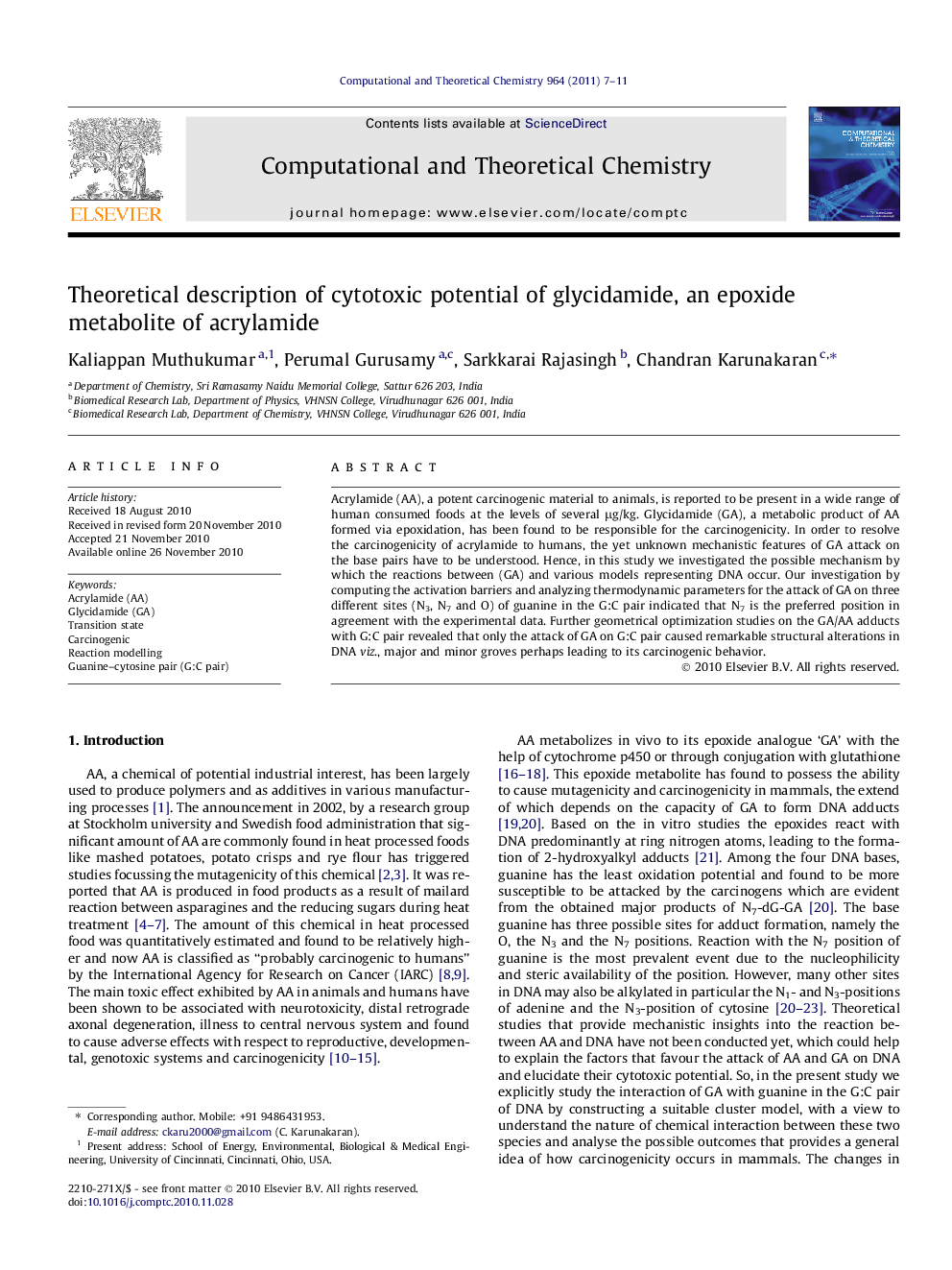| Article ID | Journal | Published Year | Pages | File Type |
|---|---|---|---|---|
| 5395296 | Computational and Theoretical Chemistry | 2011 | 5 Pages |
Abstract
Acrylamide (AA), a potent carcinogenic material to animals, is reported to be present in a wide range of human consumed foods at the levels of several μg/kg. Glycidamide (GA), a metabolic product of AA formed via epoxidation, has been found to be responsible for the carcinogenicity. In order to resolve the carcinogenicity of acrylamide to humans, the yet unknown mechanistic features of GA attack on the base pairs have to be understood. Hence, in this study we investigated the possible mechanism by which the reactions between (GA) and various models representing DNA occur. Our investigation by computing the activation barriers and analyzing thermodynamic parameters for the attack of GA on three different sites (N3, N7 and O) of guanine in the G:C pair indicated that N7 is the preferred position in agreement with the experimental data. Further geometrical optimization studies on the GA/AA adducts with G:C pair revealed that only the attack of GA on G:C pair caused remarkable structural alterations in DNA viz., major and minor groves perhaps leading to its carcinogenic behavior.
Related Topics
Physical Sciences and Engineering
Chemistry
Physical and Theoretical Chemistry
Authors
Kaliappan Muthukumar, Perumal Gurusamy, Sarkkarai Rajasingh, Chandran Karunakaran,
